- The shooting star is a 1-bar bearish reversal candlestick pattern
- This formation is bearish because the price tried to rise sharply throughout the day, but then the seller took over and pushed the price down to the opening price
Statistics to prove if the Shooting Star pattern really works
Are the odds of the Shooting Star pattern in your favor?
How does the Shooting Star behave with a 2:1 target R/R ratio?
From our research the Shooting Star pattern confirms 60.2% of the time on average overall all the 4120 markets we analysed. Historically, this patterns confirmed within 2.2 candles or got invalidated within 3.5 candles. If confirmed, it reached the 2:1 R/R target 37.8% of the time and it retested it's entry price level 93.4% of the time.
Not accounting for fees, it has an expected outcome of 0.135 $/$.
It means for every $100 you risk on a trade with the Shooting Star pattern you make $13.5 on average.
Want to account for your trading fees? Have the detailled stats for your favorite markets / timeframes? Or get the stats for another R/R than 2:1?
🚀 Join us now and get fine-tuned stats you care about!
How to handle risk with the Shooting Star pattern?
We analysed 4120 markets for the last 59 years and we found 66 563 occurrences of the Shooting Star pattern.
On average markets printed 1 Shooting Star pattern every 234 candles.
For 2:1 R/R trades, the longest winning streak observed was 11 and the longest losing streak was 39. A trading strategy relying solely on this pattern is not advised. Anyway, make sure to use proper risk management.
Keep in mind all these informations are for educational purposes only and are NOT financial advice.
If you want to learn more and deep dive into candlestick patterns performance statistics, I strongly recommend you follow the best available course about it. Joe Marwood (who's a famous trader with more than 45 000 Twitter followers) created an online course called "Candlestick Analysis For Professional Traders" in his Marwood Research University. There he will take you through the extensive backtesting of the 26 main candlestick patterns. He then summarizes which one is THE best pattern. Do you know which one it is?
Remember, don't trade if you don't know your stats. Click here to signup to the course now!
Most traders make use of Japanese candlesticks such as the shooting star, as popular charting techniques. Candlestick patterns offer a lot of insight into how market prices might behave. These patterns could indicate entry and exit points for your trade. The shooting star candlestick pattern is one of them.
What is the Shooting Star candlestick pattern?
A shooting star candlestick pattern is a chart formation. It occurs when the price of an asset is significantly pushed up, but then rejected and closed near the open price. This makes a long upper wick, a small lower wick and a small body.
The upper wick must take up at least half of the length of the candlestick for it to be considered a shooting star. And, it must appear at the top of an uptrend. Due to this, the shooting star candlestick pattern is often seen to be a possible signal of bearish reversal. This means an uptrend might not go on and prices may fall.
Traders should be careful not to confuse the shooting star pattern with an inverted hammer candlestick pattern. They both have a longer upper wick and small body. But the inverted hammer indicates bullish as opposed to bearish reversal. Also, the inverted hammer is often seen at the bottom of a downtrend.
The shooting star is formed when the open, low, and close are approximately the same price. Also, there is a long upper shadow, generally defined as at least twice the length of the real body.
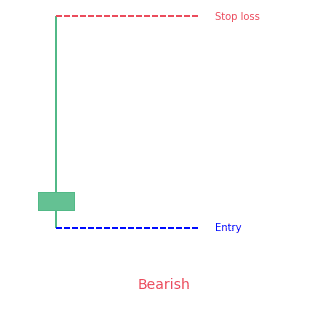
How to identify the Shooting Star candlestick pattern?
For a candlestick to be considered a shooting star, the formation must appear during an advance in price. Also, the distance between the highest price of the day and the opening price has to be twice as large as the body of the shooting star. There should be little to no shadow below the real body.
Traders check to see if the distance between the highest price during the day and the initial price is twice as much as the shooting star’s body. Additionally, the distance between the closing price and the least price for the day is either insignificant or not present at all.
When the low and the close are the same, a bearish shooting star candlestick forms and is seen as a stronger formation because the bears were able to reject the bulls, and were able to push prices even more by closing below the opening price.
This candlestick formation is considered less bearish, but bearish when the open and low are roughly similar. The bears were able to counteract the bulls, but were not able to bring the price back to the price at the open.
The long upper shadow of this pattern means that the market tested to find where resistance and supply were located. When the market found the area of resistance (the highs of the day), bears began to push prices lower, closing the day near the opening price. Thus, the bullish advance upward was rejected by the bears.
What does the Shooting Star pattern tell traders?
The context is important
Shooting stars mean a potential price top and reversal. The candle is most effective when it comes up after a series of three or more consecutive rising candles with higher highs. It may also form during a period of overall rising prices, even if a few recent candles were bearish.
After the advance, the shooting star opens and then strongly rises during the day. This indicates the same buying pressure seen over the last several periods. Progress is made during the day, even if the sellers come in and push the price back down to near the open, canceling the gains for the day. This means that buyers lost control by the close of the day, and the sellers may be taking over.
The shape is important
The long upper shadow shows the buyers who bought during the day but are now in a losing position because the price dropped back to the open.
The candle that is formed after the shooting star is what confirms the shooting star candlestick. The high of the next candle has to stay lower than the high of the shooting star and then proceed to close below the close of the shooting star. Normally, the candle after the shooting star gaps lower or opens near the prior close and then moves lower on heavy volume. A down day after a shooting star helps confirm the price reversal and shows that the price could continue to fall. Traders may look to sell or short sell.
If the price rises after a shooting star, the price range of the shooting star may still act as resistance. For instance, the price may consolidate in the area of the shooting star. If the price ultimately keeps on rising, the uptrend is still intact. Traders should go for long positions overselling or shorting.
Advantages of using the Shooting Star candlestick pattern in trading
The shooting star pattern is a great tool for new/beginner technical traders due to its simplicity. Spotting a potential shooting star candle is straight forward if traders stick to the pattern description.
The candle pattern by itself will sometimes be flawed. But if the pattern shows up close to a level of resistance or trend line, the shooting star can add confirmation to the new bearish bias. This is because one candle is not very important in the general trend or market movement.
When using this candlestick pattern, it is important to incorporate risk management. This gives the trader with a ‘safety-net’ should the market move negatively. Additional benefits include:
- Easy to identify
- It is suitable for but not limited to beginner/new traders
- It is reasonably reliable in identifying a bearish reversal – especially if it appears near a resistance level.
How to trade when you see the Shooting Star candlestick pattern?
Few simple steps
There are some steps you should follow if you want to trade when you see the shooting star candlestick pattern. Keep in mind that the shooting star could indicate negative reversal – in other words, market prices could go down. If you want to take advantage of falling prices, you can do so through other derivatives.
The shooting star candlestick strategy is a very easy and effective method to trade the financial markets. You can trade stocks, forex, currencies, commodities, futures, and even cryptocurrencies across various times.
It is fairly simple trading this reversal pattern. First, the implication is for lower prices, therefore we want to look for entries to short. Since the prices were initially rejected at the high of the shooting star, we will look to place the stop-loss at the recent swing high (red horizontal line on the chart).
Handling the trade
A trader could enter on the open of the next candle. If the trader intends to be conservative and have a better risk-to-reward ratio, he/she should trade the retest of the wick (black dashed line). Retest of the wick always occurs when the wick is longer than normal.
Most times, prices will revert and retrace upward at a portion of the long wick. A trader realizing this might opt to wait and enter around the middle of the wick rather than enter immediately after the shooting star candle forms. This means the trader is going into a short trade at a higher price and with a tighter stop-loss reducing risk. Regardless of the entry mechanism, the stop-loss will still be the same.
Remember that the shooting star candlestick should never be viewed in isolation. Before you act on the formation, confirm the signal using technical indicators. For example, if you think that a shooting star at the top of an uptrend means possible reversal, you can test the bearish bias.
How does the Shooting Star pattern look in real life?
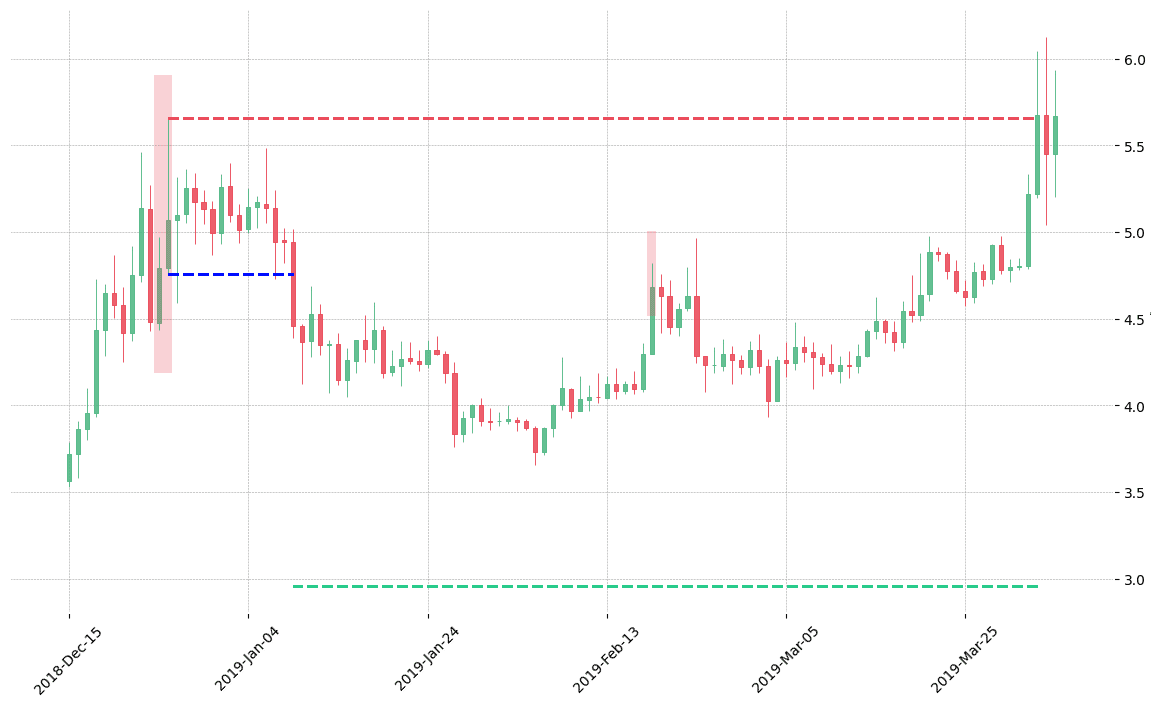
Looking to learn more about this pattern?
You should take a look at Joe Marwood's online course. In his course, he backtested the 26 main candlestick patterns before to summarize which one is THE best pattern. I really liked his course and you shouldn't miss it!
Click here to signup to his "Candlestick Analysis For Professional Traders" course now!
 Good Trading requires the Best Charting Tool!
Good Trading requires the Best Charting Tool!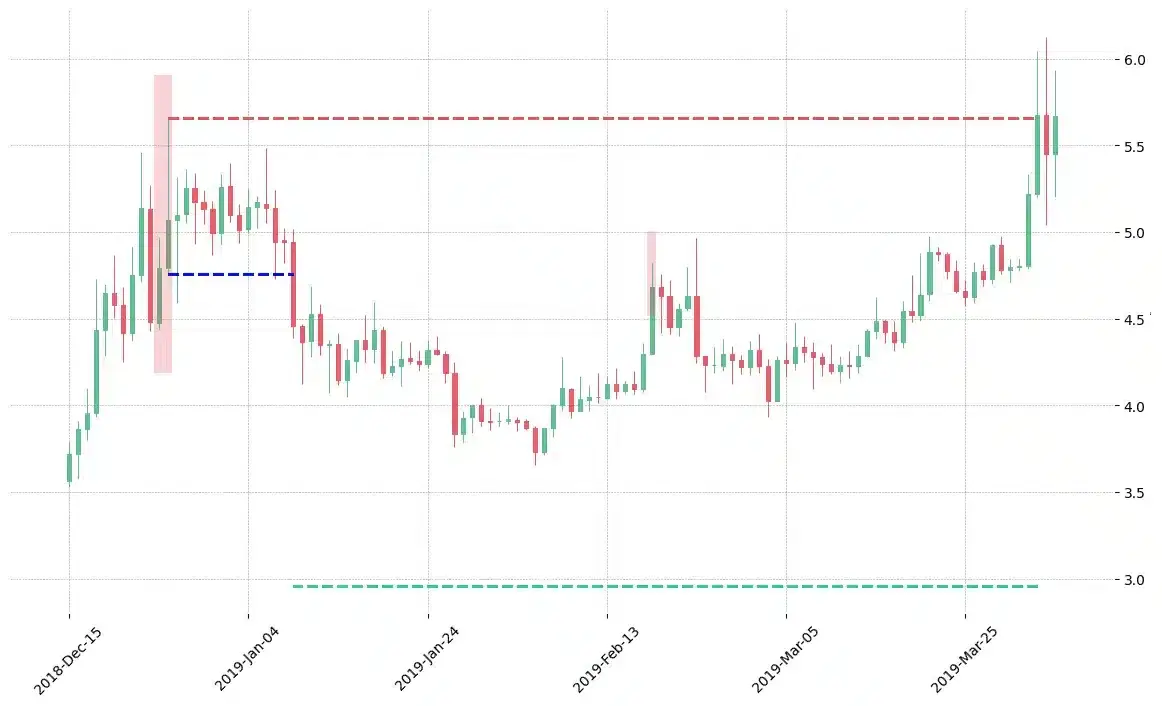

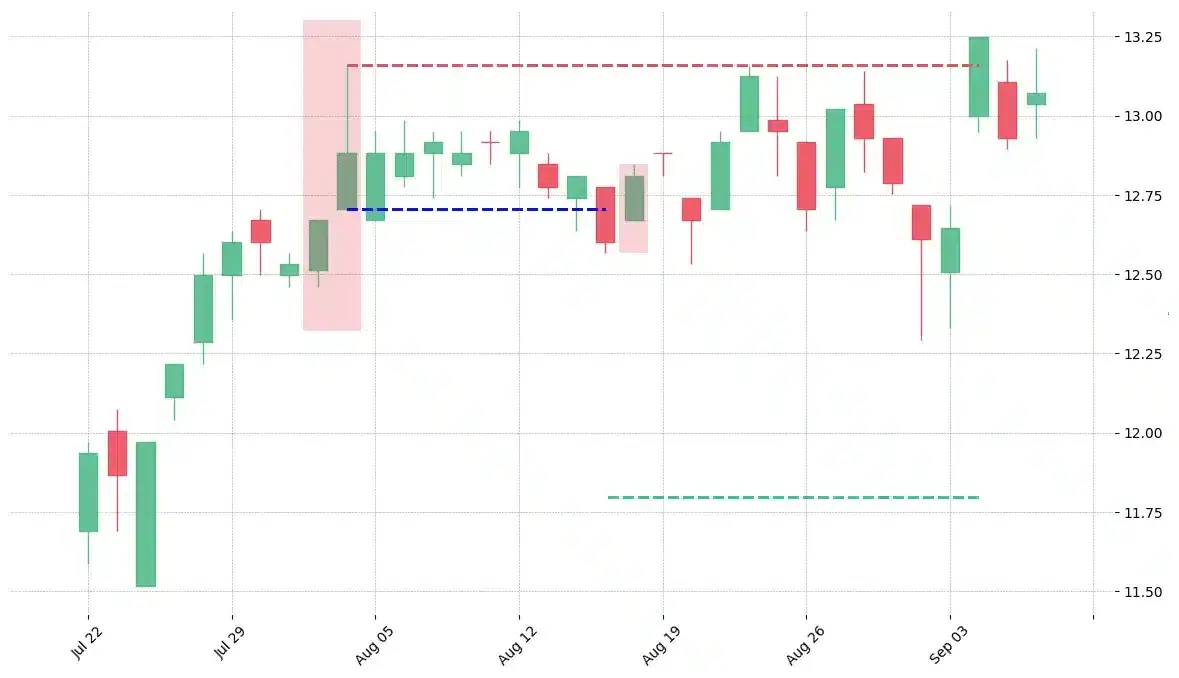
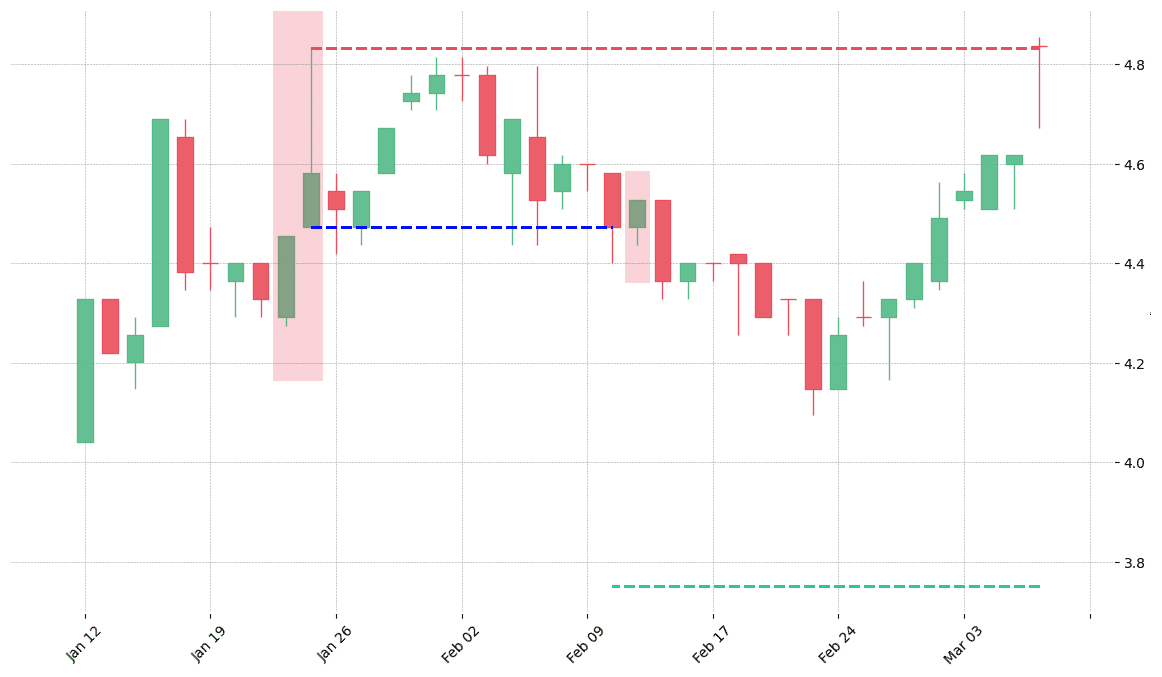
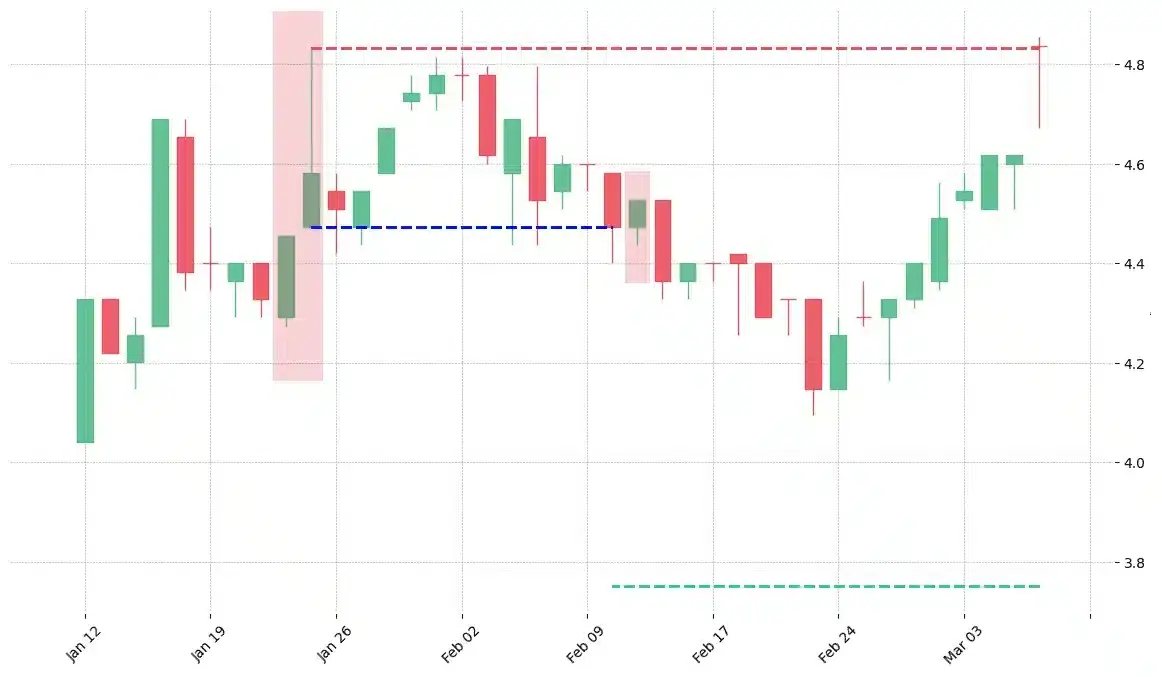
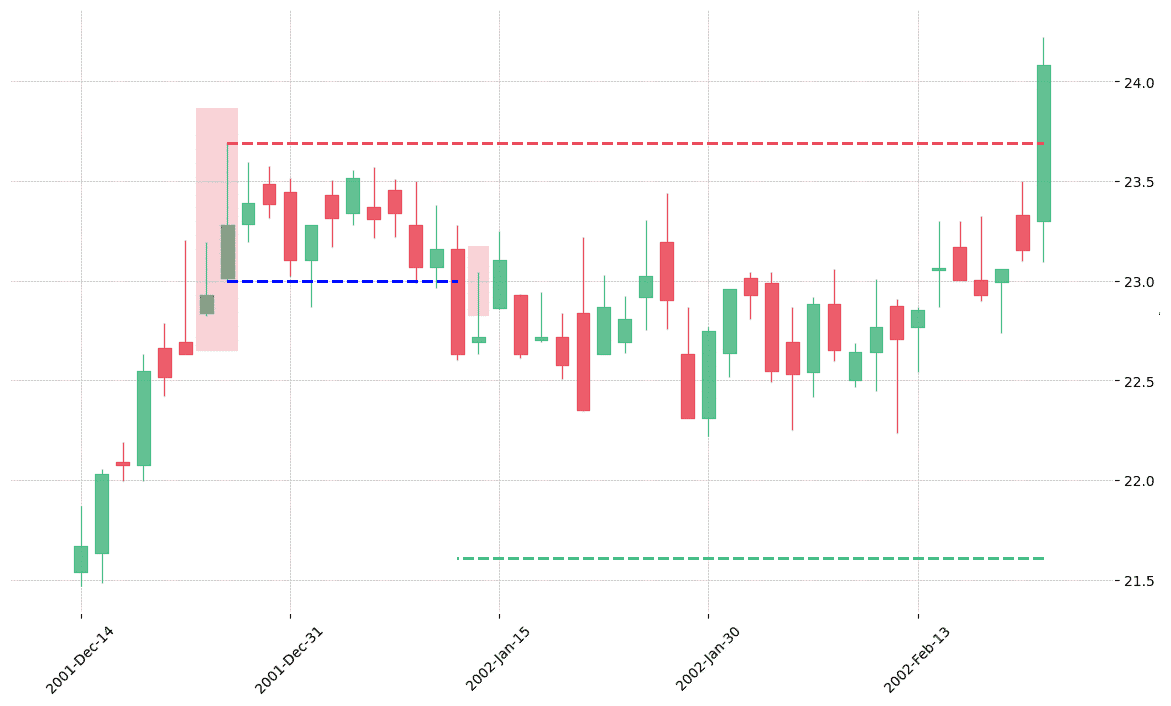
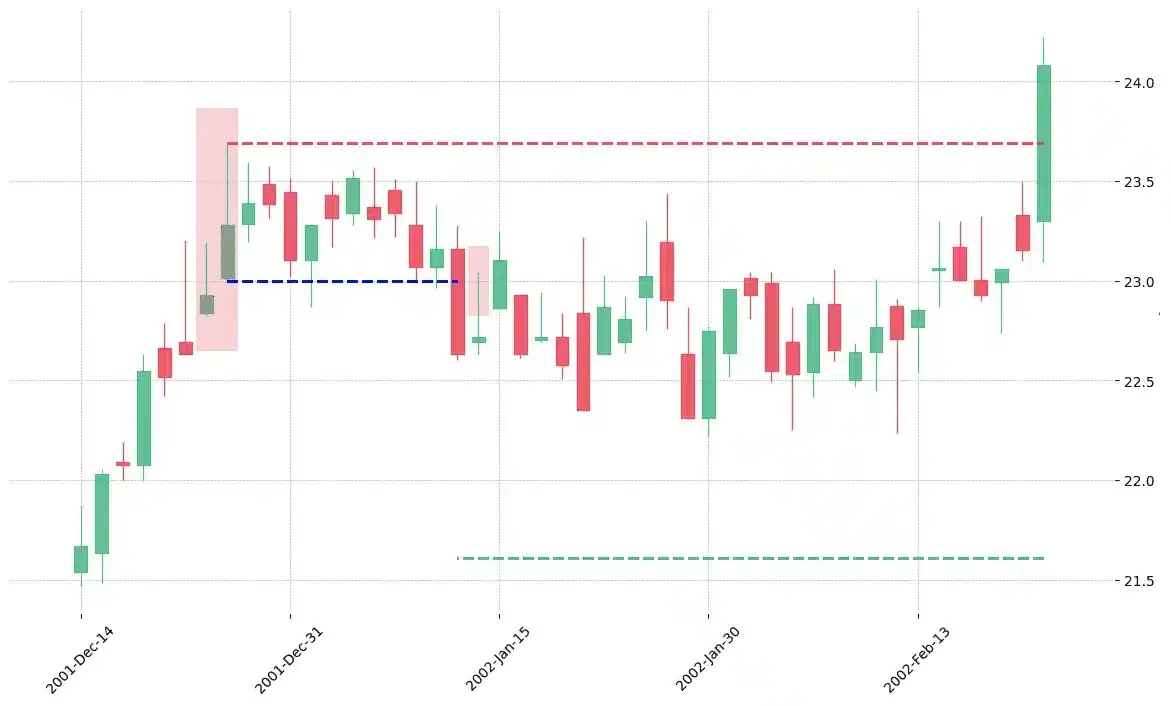
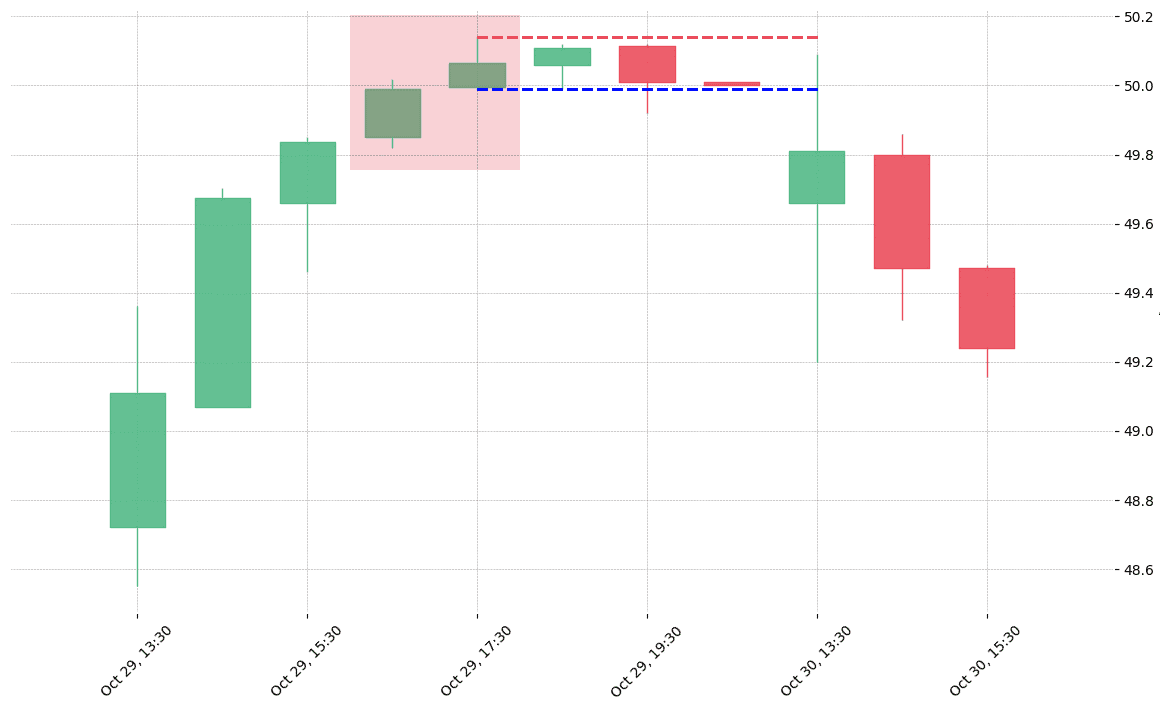
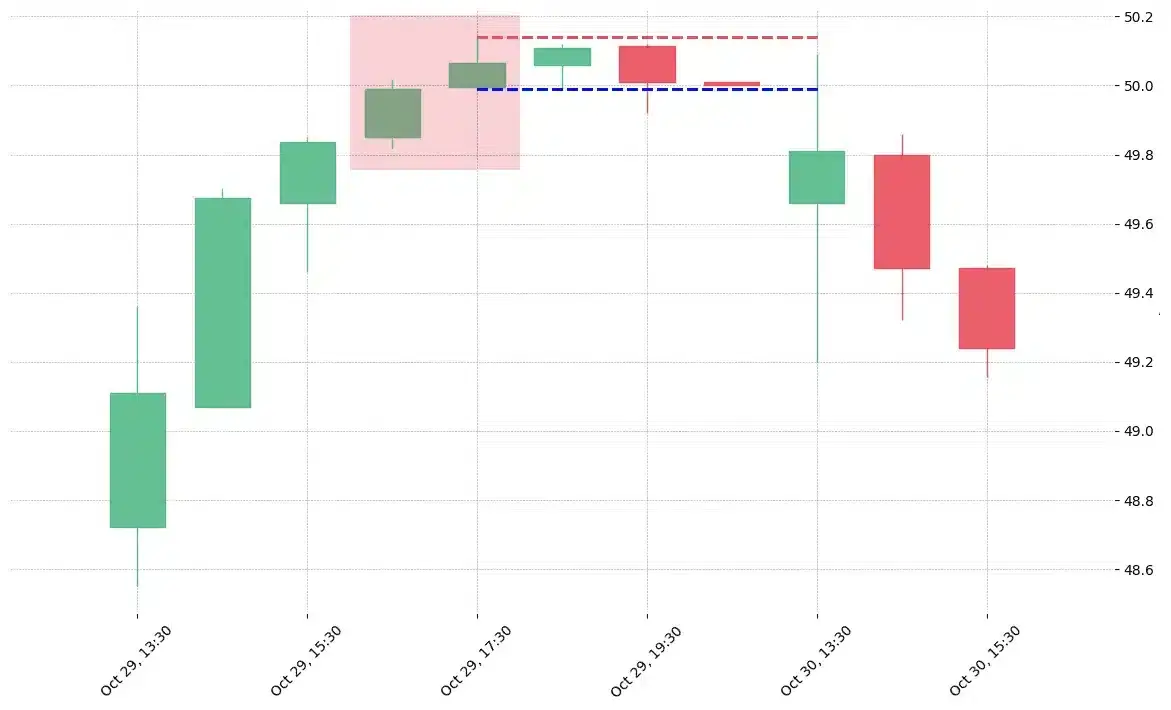
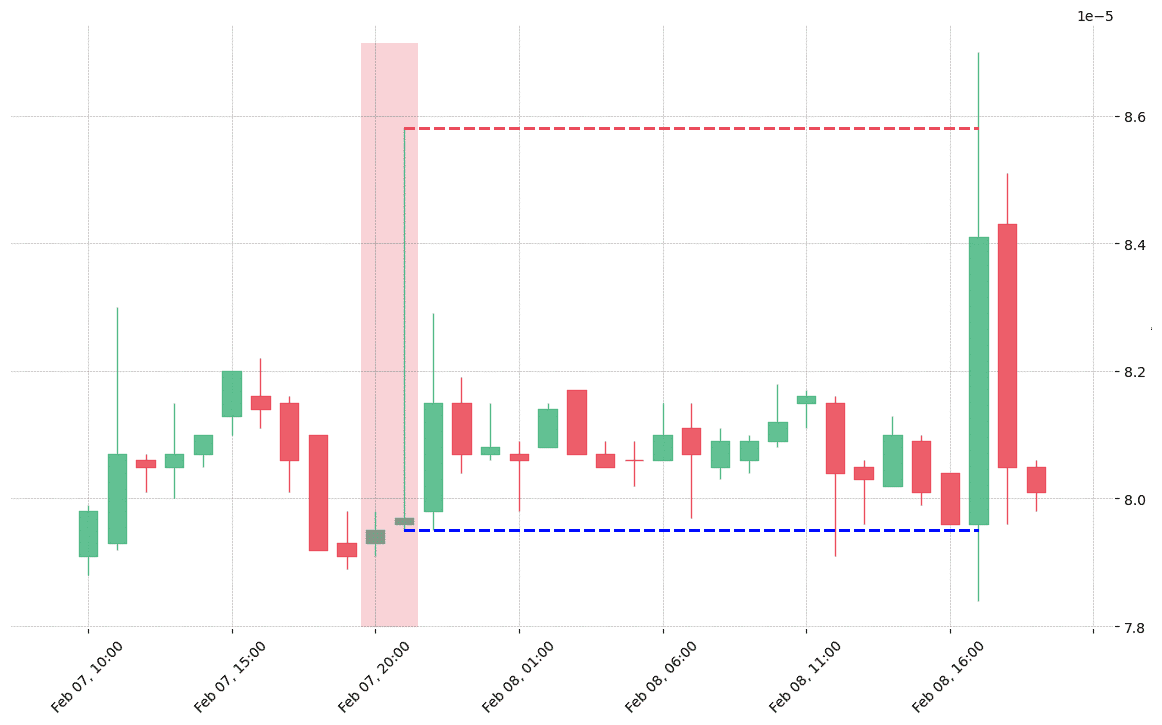

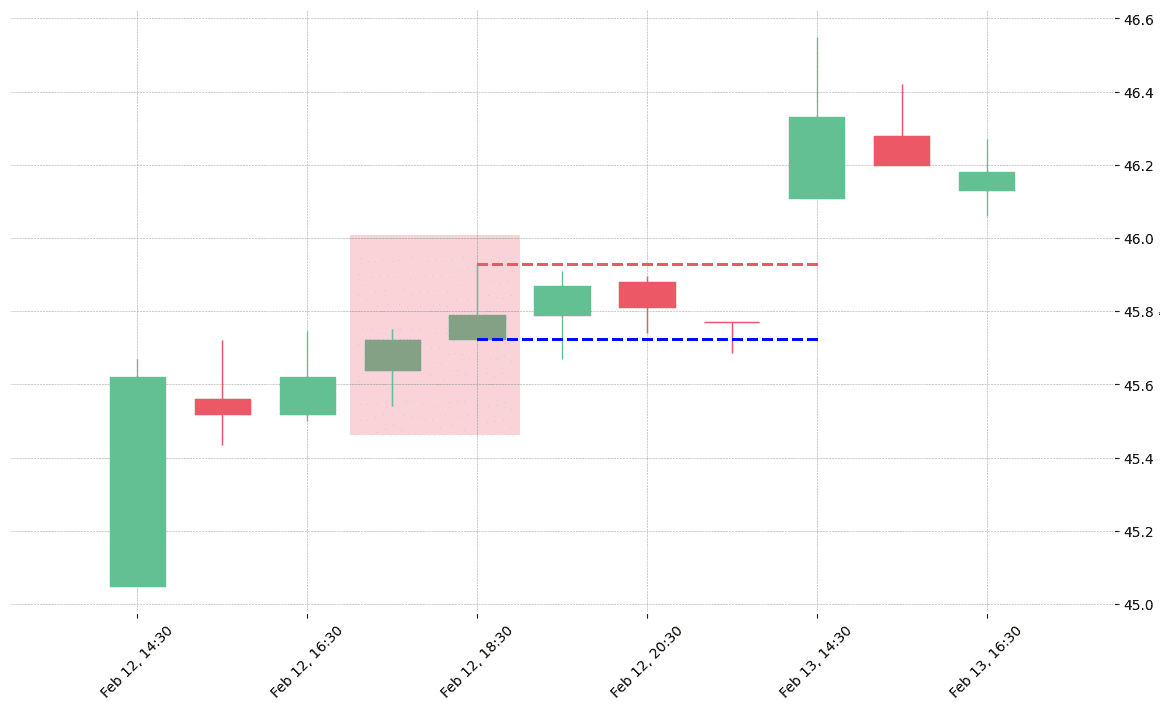
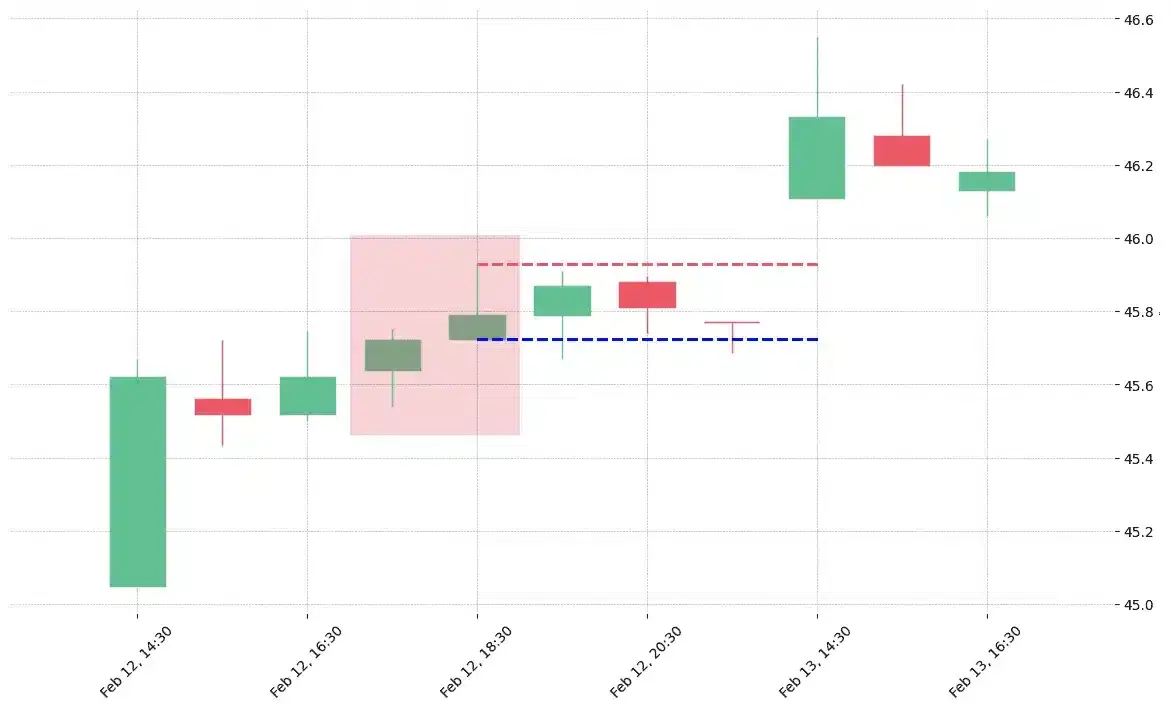


 We loved Marwood Research’s course “Candlestick Analysis For Professional Traders“. Do you want to follow a great video course and deep dive into 26 candlestick patterns (and compare their success rates)? Then make sure to check this course!
We loved Marwood Research’s course “Candlestick Analysis For Professional Traders“. Do you want to follow a great video course and deep dive into 26 candlestick patterns (and compare their success rates)? Then make sure to check this course!